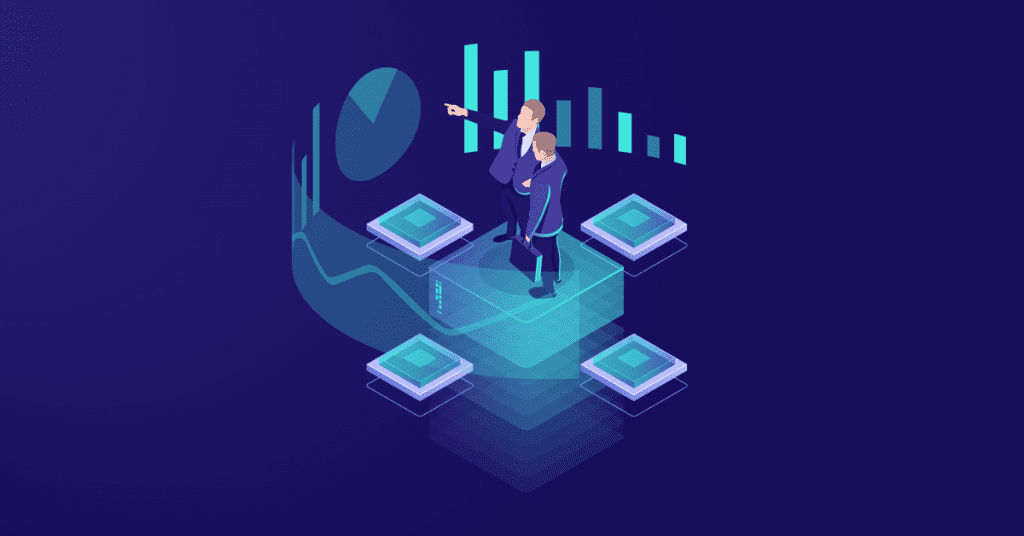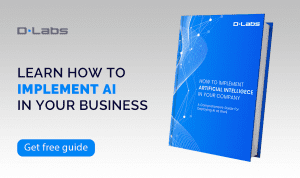We’ve written in-depth about the differences between AI, Machine Learning, Big Data, and Data Science. Today, it’s time to explore another term that holds equal weight in the modern business world: Data Mining.
In this article, you’ll learn what data mining is, the steps involved, the different models used, and most importantly, what you can achieve by using data mining solutions in your industry — without further ado, let’s begin.
What Is Data Mining?
Data mining involves searching vast volumes of data for patterns and trends. And the practice can answer questions that a simple query-and-report process cannot.
Data mining techniques uncover insights by using complex algorithms to segment data sets before evaluating the likelihood of future events. And this predictive capability leads some to refer to it as Knowledge Discovery in Data (or KDD).
No matter the term you choose, all data mining concepts and techniques have four central properties:
- Searching of vast data setsAutomatic pattern discoveryPrediction of probable outcomesCreation of actionable insights
Data mining has historically involved an intensive manual coding process. However, many of the manual aspects are now automated.
That said, data mining solutions still require programming expertise — coupled with statistical knowledge — to collect, clean, and process the data. Once this stage is complete, we can interpret the results.
Let’s review each step in detail.
The Data Mining Process In 4 Simple Steps
Data mining projects have infinite objectives. But every data mining process nearly always comprises the same four steps:
Step 1: Data Collection
To spot trends and patterns, you need data — and lots of it. That’s why the first step is always collection-focused. There’s no limit to how much data you need: get as much as you can from the most reliable sources possible.
And pay attention to the saying, ‘Garbage in, garbage out,’ which warns that poor-quality data equals low-grade results, meaning you must focus on quality to get the output you want.
Step 2: Data Cleaning
When you collect lots of data, you inevitably collate unnecessary information. Step two involves ‘removing the noise’ to leave only what’s useful — that way, you can be sure the data mining process leads to accurate predictions.
Step 3: Data Analysis
Here’s where the magic happens. It’s time to apply the algorithms and models to identify the trends that feed step four.
Step 4: Interpretation
Data mining aims to create actionable insights. And this step does just that: you extrapolate conclusions from the patterns, which gives you an array of predictions to use as the basis for action.
Steps two through four are typically an iterative process.
That’s to say, if you discover you’re missing key information during the data analysis phase, or perhaps the data cleanse has simply removed so much data that you don’t have enough to draw an accurate conclusion, then you should return to Step 1.
So — now you know the process. But what are the models involved in the data mining concepts and techniques?
We’ll turn to those now.
Data Mining Models
When it comes to data mining models, there are several associated with the practice. But here are the most popular:
- Descriptive: Looks at historical data and explains what happened in the past; it helps businesses understand performance by providing the context of results, often using graphs, charts, and dashboards.Predictive: Feeds historical data into a machine learning model, uses it to spot trends and patterns, then predicts ‘what might happen next’ by assuming past events forecast future behavior.Prescriptive: The level up from predictive — prescriptive models quantify the impact of ‘what might happen next,’ enabling leaders to plan actions and see outcomes before making any decision.
Descriptive models are a backward-looking technique. They detail what happened (and why), helping businesses find the reasons behind a known outcome.
Predictive and prescriptive models, on the other hand, use the past to predict what will happen: they are forward-looking, helping leaders plan the next steps. If you combine all three, you can make smarter business decisions that ultimately get you ahead of the competition.
— ‘How, exactly?’ you ask.
Let’s drill down on the models to see the tasks they can perform.
What Tasks Can Data Mining Models Perform?
In truth, the data mining process can result in all manner of output. But there are several key tasks that data mining models perform:
- Classification: imagine if you could assign previous observations or events to a set of predefined classes? With classification, you can — for example, a bank manager can classify loan applicants as ‘risky or safe.’Clustering: similar to classification, but instead of using predefined classes, clustering puts objects in groups based on shared characteristics — like a marketer segmenting customers based on collective purchasing patterns.Regression: if you’re interested in predicting the future, use regression. This statistical method seeks to determine the relationship between one variable and a series of other variables — helping with tasks like spotting an upcoming pinch-point in production capacity.Association: you can amplify predictions by identifying patterns between related events, uncovering insights like, ‘Event Y often follows Event X.’Sequential Patterns: these provide a layer of time-related detail on associated events, suggesting that ‘once Event X has happened, Event Y will follow after this amount of time.’Deviation Analysis: if you’re looking for outliers, this one’s for you — deviation analysis can spot the most unusual patterns in any data set, including potential cases of financial fraud or suspect insurance claims.
How To Use Data Mining In Business?
The predictive power of data mining has altered business for good.
Leaders can no longer create strategies based on experience alone: they must leverage data to forecast how the future might look. It’s a tall order — still, executives are using the practice to great effect.
Marketers are capitalizing on growing databases to improve segmentation and enhance communications: by understanding the relationship between characteristics like gender, age, and preferences, they can better personalize offers or predict when someone is going to unsubscribe from a service.
Retailers are analyzing purchasing patterns to understand when shoppers buy products together, which informs in-store product placement. Moreover, data can show when a particular offer drives sales or what impulse purchases are most popular at the checkout.
Even banks are getting in on the action, using data to spot risks and opportunities. This can apply to credit ratings, anti-fraud strategies, even marketing. If banks can monitor spending patterns, they can optimize the timing of communications and boost the return on campaign investment.
Explore Your Own Solution Today.
Data mining is involved. And it requires a robust, reliable dataset.
But the potential insights harbor substantial rewards, so the benefits nearly always outweigh the costs of developing a data mining solution. If you’re unsure how data mining can benefit your organization, there’s a quick way to find out.
Schedule a 15-minute consultation with a DLabs.AI specialist today — we’d be delighted to review the possibilities, and, if appropriate, we can recommend the next steps.
Artykuł What Is Data Mining and How Does It Work? pochodzi z serwisu DLabs.AI.



